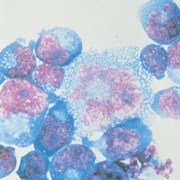 Photo: Getty Images
Photo: Getty Images
The human immunodeficiency virus (HIV) is the virus that can lead to acquired immune deficiency syndrome, or AIDS. HIV damages a person’s body by destroying specific blood cells that are vital to helping the body fight diseases.
As HIV progressively damages these cells, the body becomes more susceptible to infections, which it has more difficulty fighting off. Antiviral drugs and other treatments offer help and hope to HIV infected patients. Eventually, however, the havoc that HIV wreaks on the immune system leads to AIDS.
Managing the risk of HIV exposure in the health care setting is critical. Casual contact with an HIV-infected person does not expose health care workers or anyone else to HIV.
Medical experts agree that the careful practice of infection control procedures, including universal precautions, offers important protection for both patients and health care providers from possible HIV transmission.
Since HIV transmission is much more likely when infected bodily fluids come into contact with the bloodstream, the main risk of HIV transmission for in the healthcare setting involves transmission through accidental injuries from needles and other sharp instruments contaminated with the virus.
If universal precautions are carefully followed, scientists estimate that the risk of exposure from a needle-stick is less than one percent.
HIV Transmission Cases in the Health Care Setting
In 1990, the CDC reported that an HIV-infected dentist in Florida infected some of his patients while performing dental work. To date, the CDC has not been able to establish how the transmission took place. No additional studies have found evidence of transmission from provider to patient in health care settings.
The CDC has documented rare cases of patients contracting HIV in health care settings from infected donor tissue, which occurred due to failures in following universal precautions and infection control guidelines and/or early in the HIV epidemic prior to the establishment screening procedures and other universal precautions.
Prevention Strategies
Health care workers should assume that the blood and other body fluids from all patients are potentially infectious, thereby following infection control precautions at all times.
These precautions include: using barriers (e.g., goggles and/or gloves) when anticipating contact with blood or bodily fluids, immediately washing skin after contact with blood or body fluids, and carefully handling and disposing of sharp instruments during and after use.
Sources:
What is Aids? Avert.org. Web. 22 Sept. 2011
http://www.avert.org/aids.htm
HIV/AIDS Basics. Cdc.gov. Web. 22 Sept. 2011
http://www.cdc.gov/hiv/resources/qa/definitions.htm
Occupational HIV Transmission and Prevention Among Health Care Workers. Cdc.gov. Web. 22 Sept. 2011
http://www.cdc.gov/hiv/resources/factsheets/hcwprev.htm
HIV Transmission. Cdc.gov. Web. 22 Sept. 2011
http://www.cdc.gov/hiv/resources/qa/transmission.htm
Reviewed September 26, 2011
by Michele Blacksberg RN
Edited by Jody Smith






Add a CommentComments
There are no comments yet. Be the first one and get the conversation started!